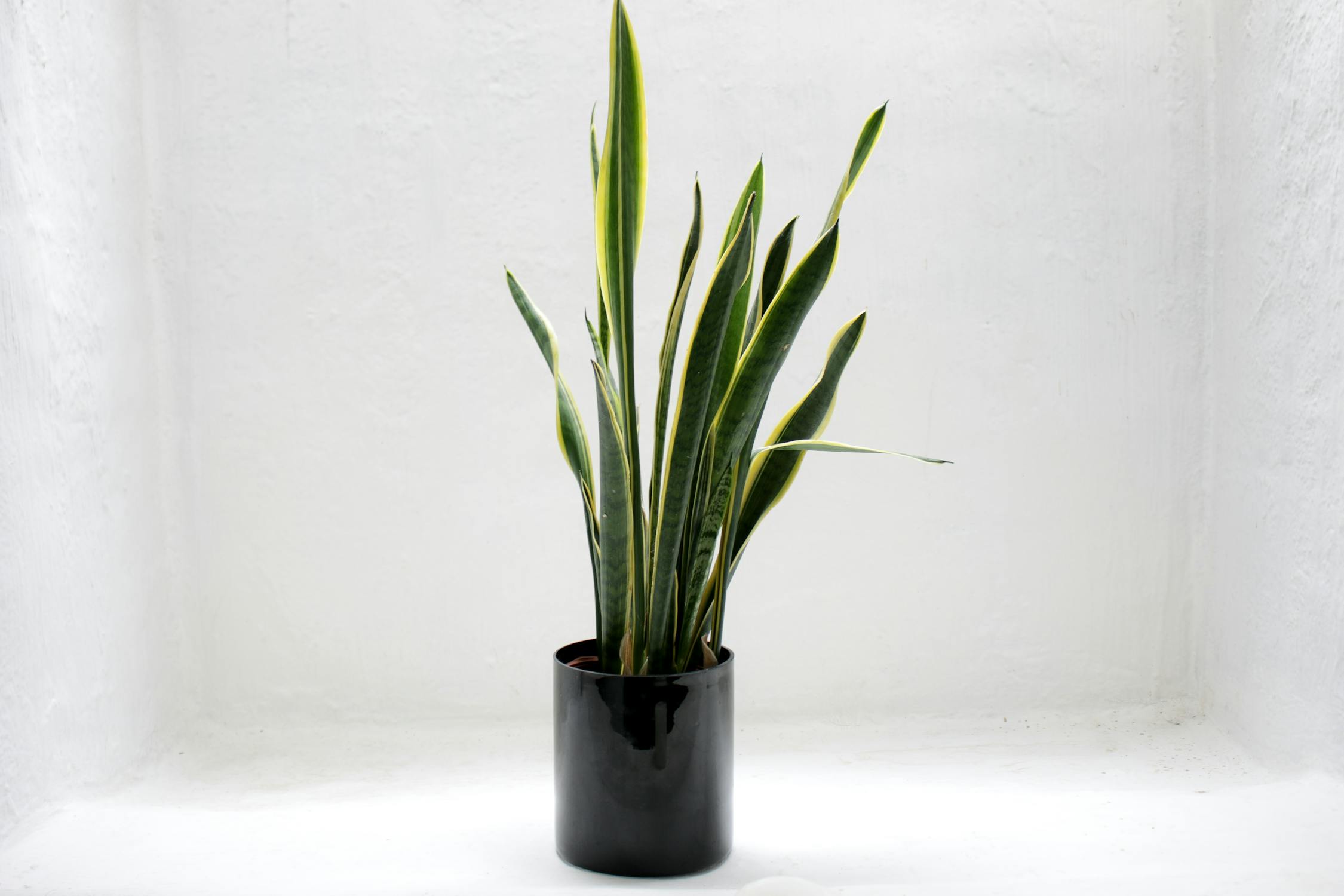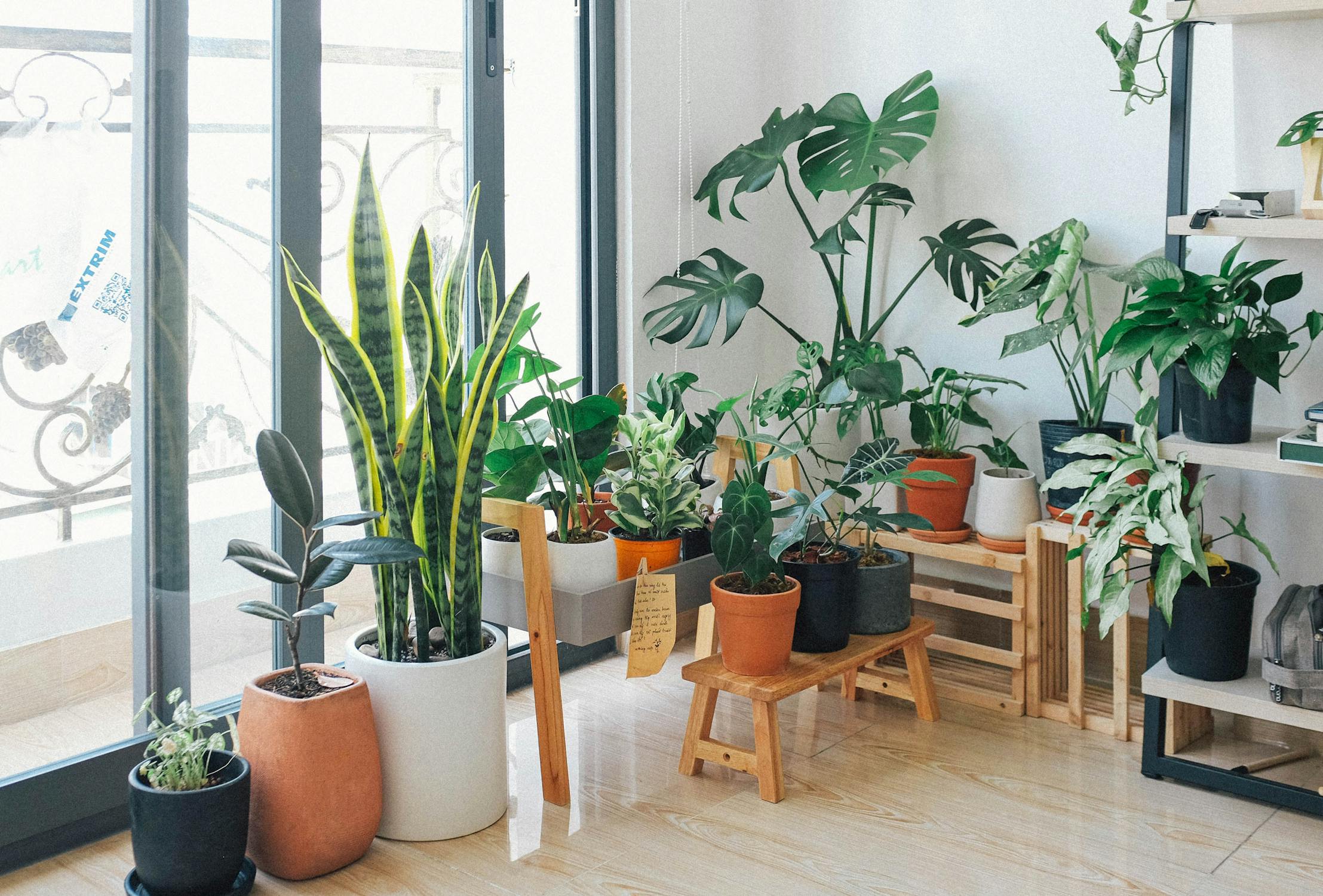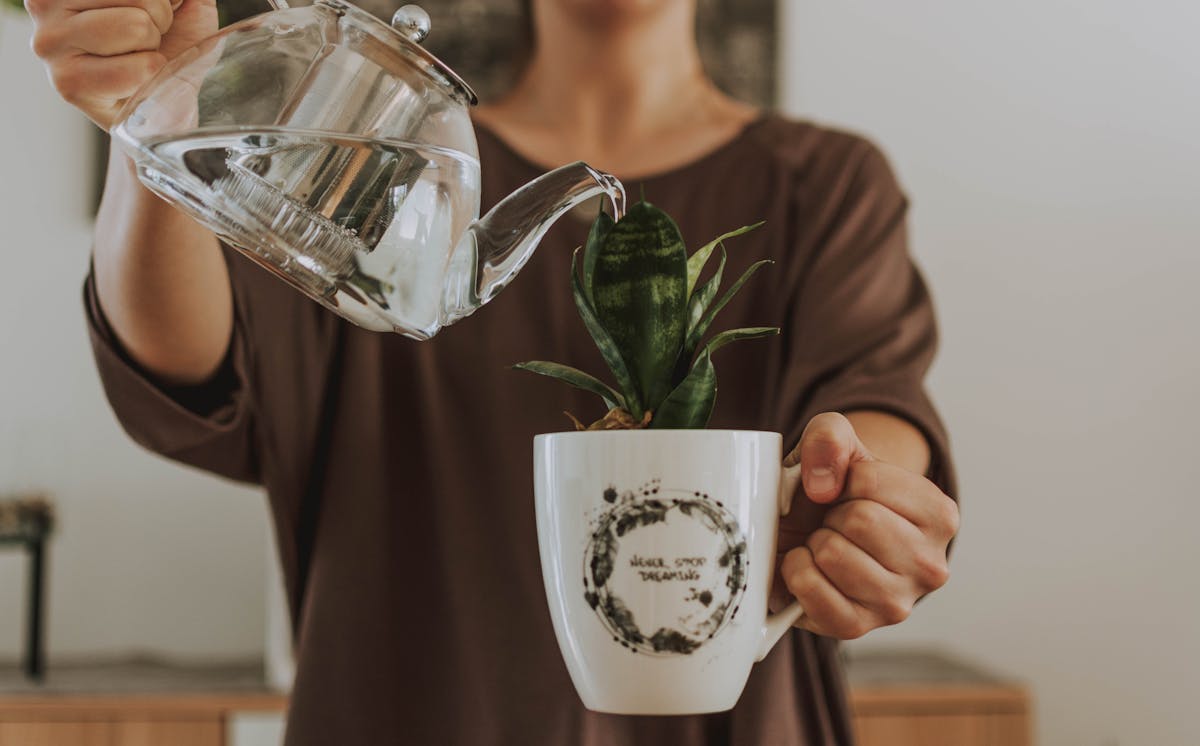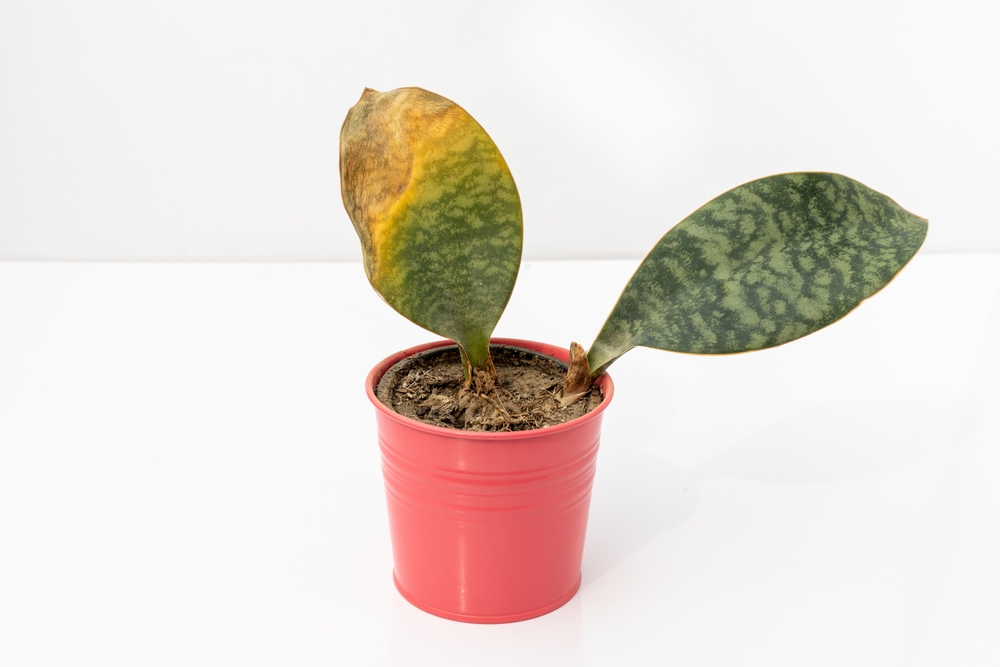Snake plants aren’t just houseplants—they’re nearly indestructible, effortlessly stylish, and packed with benefits. With their bold, upright leaves and sleek appearance, they bring a modern touch to any space while demanding almost nothing in return. Originally from the dry landscapes of West Africa, these hardy plants have adapted to thrive in nearly any indoor environment, from sun-drenched windowsills to dim corners. They purify the air, survive weeks without water, and add a striking vertical element to your home. Whether you’re a seasoned plant lover or a self-proclaimed “plant killer,” the snake plant is the perfect companion. Let’s dive in!
The Benefits of Snake Plants

Snake plants do more than sit in a corner looking good. A NASA study found they filter out pollutants like formaldehyde, benzene, and xylene. Unlike most plants, they release oxygen at night, which makes them a great choice for bedrooms. Their ability to reduce airborne allergens means they can make your home feel fresher. Some studies suggest houseplants, including snake plants, may help lower stress levels. Their hardy nature makes them perfect for people who want greenery without the constant upkeep.
These plants also work well in offices since they tolerate artificial light and inconsistent watering. They add a natural touch to workspaces, helping improve focus and mood. Whether you want a cleaner home environment or a stylish, low-effort plant, the snake plant offers both.
Types of Snake Plants

Snake plants come in many shapes and sizes, offering a diverse range of aesthetics for any space. The Sansevieria trifasciata ‘Laurentii’ is the most recognizable, with its dark green leaves edged in bright yellow. Sansevieria cylindrica, known as the cylindrical snake plant, features long, round leaves that spread outward like elegant spikes. For small spaces, the Bird’s Nest snake plant stays compact, forming a dense, low rosette of leaves that fit neatly on desks or shelves. The Moonshine variety boasts silvery, pale-green foliage that looks modern and soft, adding a touch of sophistication. Some types grow tall, making a bold statement in large pots, while others remain small and versatile enough for shelves and workspaces. With so many unique varieties available, it’s easy to find one that perfectly matches your home’s style and ambiance.
How to Choose the Right Snake Plant

A healthy snake plant has firm, upright leaves with no brown spots or mushy areas. The color should be rich and even, whether solid green or variegated. Check the soil before buying. It should be dry or slightly damp—never soggy. If you see yellowing leaves or soft roots, the plant may have been overwatered.
Consider your space. Taller varieties work well on floors, while compact ones fit on tables or shelves. If your home has low light, choose a variety that can handle shade. A well-chosen snake plant can last for years with minimal effort. Once you bring it home, it will likely outlive most of your other plants—even the ones that needed “just a little more water.”
Light and Placement Guide

Snake plants do best in bright, indirect light but can tolerate low light conditions as well. A spot near a sunny window is ideal, providing gentle, filtered sunlight that they love. They can also thrive under artificial lighting if natural light is limited. However, avoid placing them in direct midday sun because harsh rays can scorch their delicate leaves. In a darker room, they may grow more slowly but will still survive and add a touch of greenery. They’re perfect for a variety of spaces including bedrooms, living rooms, and offices, where their sculptural form brightens the environment. Since they release oxygen at night, they work exceptionally well in sleeping areas, contributing to a fresher atmosphere. It’s a good idea to rotate your plant every few weeks so that each side receives equal light, promoting even growth. Additionally, these plants handle temperature fluctuations remarkably well, although it is best to keep them away from vents and drafts to avoid sudden changes. With proper placement and a bit of care, snake plants will not only survive but add lasting visual interest to any room.
Watering Your Snake Plant

Snake plants don’t like being watered too much. Their thick, fleshy leaves store water, so they need far less moisture than most other houseplants. The best way to know when to water is to check the soil. Stick your finger about two inches deep into the soil—if it feels dry, then go ahead and water. If it still feels moist, wait a few more days before trying again. When you water, do so deeply until excess water drains out of the bottom, but never let the plant sit in standing water. Overwatering can lead to root rot, which is the number one killer of snake plants. During cooler months, they require even less water—sometimes only once a month. This minimal need makes them ideal for forgetful plant owners. In fact, if you tend to neglect your plants, a snake plant will be one of the few that actually appreciates a relaxed watering schedule while still thriving.
Soil and Potting Tips

Snake plants need a well-draining soil mix to thrive. A cactus or succulent potting soil works very well. You can also mix regular potting soil with sand or perlite for better drainage. Always choose a pot with drainage holes to let extra water escape. Terracotta or unglazed ceramic pots are excellent because they help evaporate moisture. Avoid pots that are too large; these plants prefer a snug fit. Repot only when the roots have filled the pot. Gently tease the roots and place the plant at the same depth. This careful method minimizes stress. With the right soil and a properly sized pot, your snake plant will stay healthy for years.
Read More: 14 Things You Can’t Skip Buying From Target
Fertilizing Your Snake Plant

These plants aren’t heavy feeders. A light application of balanced houseplant fertilizer once a month during spring and summer is plenty. Always water before fertilizing to avoid burning the roots. Over-fertilizing can lead to brown leaf tips and weak growth. In fall and winter, skip the fertilizer altogether. Snake plants enter a slow-growing phase during cooler months and don’t need extra nutrients. Less is more when it comes to feeding these plants. They thrive with minimal care, making them perfect for forgetful plant owners, or super busy moms!
For best results, use a diluted fertilizer to give a gentle nutrient boost without overwhelming the plant. Avoid concentrated formulas that might harm its delicate roots. Only supplement with extra nutrients when you notice a slight improvement in leaf color or a modest increase in growth. If the plant appears healthy and robust, it usually doesn’t require additional feeding. This measured approach helps maintain a strong, vibrant snake plant without risking nutrient burn. By keeping the feeding schedule light and infrequent, you ensure the plant stays hardy and low-maintenance all year round.
How to Propagate a Snake Plant

Snake plants are easy to propagate using leaf cuttings or division, offering two simple ways to expand your indoor garden. For leaf cuttings, start by snipping a healthy leaf near the base of the plant. Then, cut the leaf into three-inch sections. Make sure each section has a clear bottom end, which is the part that was closest to the root. Place these bottom ends in a container of water and keep them in indirect light. Over the next few weeks, you will notice tiny roots beginning to form. Once the roots grow to about one to two inches long, gently transfer the cuttings into a pot filled with well-draining soil. This method is perfect if you want to create many new plants from one healthy leaf.
Division is an even easier propagation technique. If your snake plant has produced multiple rosettes, remove it from its pot carefully. Then, gently separate the individual sections by hand or with a clean tool. Ensure that each division has a healthy cluster of roots attached. Place each section in its own small pot with fresh, well-draining soil. Both methods allow you to multiply your snake plant collection with minimal effort. This simple propagation process is cost-effective and ideal for anyone who loves plants but may have limited time or resources to buy new ones. Enjoy watching your new snake plants grow and fill your space with lush greenery.
Common Problems and Solutions

Overwatering: If your snake plant’s leaves are turning yellow, mushy, or drooping, too much water is the likely culprit. Allow the soil to dry out completely before watering again, and ensure the pot has proper drainage.
Underwatering: Wrinkled, curling, or crispy leaves mean your plant is too dry. Give it a thorough soak, then establish a consistent watering routine.
Low Light: If the plant appears stretched, pale, or slow-growing, it may need more light. Move it to a brighter spot for better health.
Pests: Mealybugs and spider mites can occasionally invade. Wipe leaves clean or use insecticidal soap to eliminate infestations.
With minor adjustments, most issues are easily resolved. Snake plants are incredibly resilient!
Read More: Mom shares $5 hack for bringing dead plants ‘back to life’
Snake Plants and Pets

Snake plants contain saponins, natural compounds that can cause mild stomach upset if ingested by pets. While not highly toxic, they can lead to nausea, vomiting, or drooling in cats and dogs. Fortunately, most animals avoid them due to their bitter taste, but curious pets—especially those that love to chew—might still take a nibble. To prevent issues, keep your snake plant out of reach by placing it on a high shelf, using a hanging planter, or positioning it in a pet-free zone. If your pet does consume a significant amount, contact your veterinarian for guidance. Many pet owners successfully keep snake plants by simply placing them where pets can’t access them. However, if you have an especially determined pet that gets into everything, you may want to consider a different plant or relocate your snake plant to a space like your office, where it stays safely out of reach.
Fun Facts About Snake Plants

- Used for Bowstrings: Their tough, fibrous leaves were once used to make bowstrings due to their incredible durability.
- Decades-Long Lifespan: Snake plants can live for several decades, making them one of the longest-lasting houseplants.
- Feng Shui Symbolism: In Feng Shui, they are believed to protect homes by blocking negative energy.
- Rare Blooms: While uncommon, snake plants can produce small, white, and fragrant flowers under the right conditions.
- Funny Nickname: They’re also called “Mother-in-law’s tongue,” a playful nod to their sharp, pointed leaves, symbolizing a sharp tongue.
These interesting plants have been around for centuries and continue to be a favorite for their resilience and beauty.
Using Snake Plants for Home Décor

Snake plants make a bold design statement with their tall, structured leaves, instantly elevating any space. A large snake plant in a sleek pot can anchor an empty corner, creating a modern and stylish focal point. Compact varieties are just as versatile, fitting perfectly on desks, bookshelves, or countertops without overwhelming the space. Pairing them with trailing plants like pothos adds texture and contrast, making your greenery arrangement even more dynamic. Their adaptability to different decorative styles is another bonus—whether you prefer ceramic, terracotta, woven baskets, or metallic planters, snake plants effortlessly complement any aesthetic. Their ability to thrive in bright or low-light conditions makes them a go-to choice for home décor, blending beauty with practicality. Best of all, they maintain their sleek appearance without demanding constant care, making them a perfect addition for anyone who wants an elegant, low-maintenance plant that fits seamlessly into any interior.
Conclusion

Snake plants are a true game changer for anyone who loves a bit of green without a lot of fuss. They brighten up your home, making rooms feel both fresh and stylish while quietly purifying the air. Even if you sometimes forget to water or worry about having a “black thumb,” these plants stick around, growing stronger with minimal care. Which means they are perfect for your office space- you can go on vacation, come back, and they are still healthy and vibrant! Their tough nature means they thrive in a range of light conditions—whether placed in a bright corner or a cozy, low-light room, they always add a modern, eye-catching accent.
From the classic green with yellow stripes to compact varieties perfect for small spaces, there’s a snake plant for every taste and home style. Their simple routine—water when the soil is dry, use well-draining soil, and feed lightly during the growing season—means that even busy households can enjoy a lush indoor garden. And if you have curious pets, a little smart placement is all it takes to keep everyone happy and safe.
In short, snake plants transform any space with their distinctive look and easy upkeep. They prove that great style and air-cleaning benefits don’t have to come with a heavy workload. Bring one home and enjoy the reliable charm they add to your everyday life.
Read More: 7 Common Houseplants That Actually Don’t Belong in the Home

